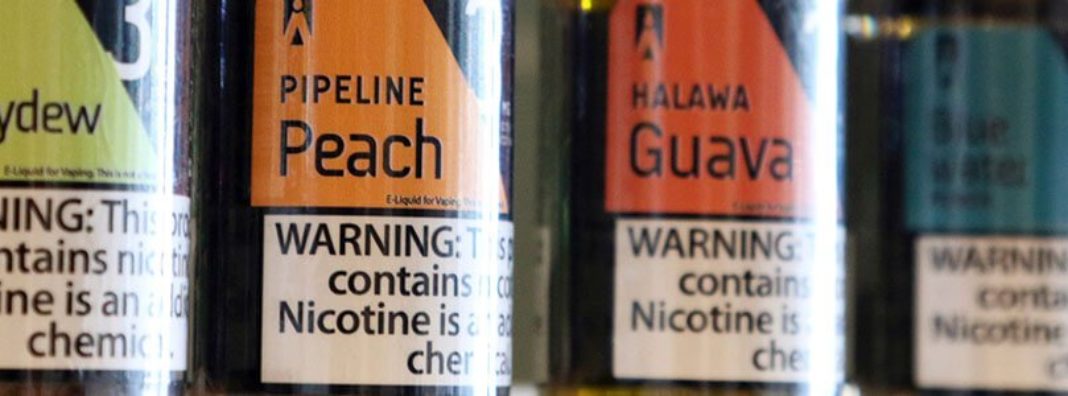
Doug Shaw, the owner of Sanctuary Tobacco for 26 years, expects to retire and close his shop if efforts to ban flavored tobacco in California are successful. Lawmakers in the state are considering a ban because of growth in the use of flavored tobacco products like e-cigarettes or vaporizers by teenagers. Yet Shaw sells none of those products. In fact, as he puts it in blunt terms, “My product [pipe tobacco] does not appeal to young people.”
Despite being far from the intended target of banning cotton candy-flavored vaping juice, traditional tobacco shops across California nevertheless are caught in efforts to ban the sale of flavored tobacco products statewide. California lawmakers may have a worthwhile goal in trying to limit underage smoking and vaping. After all, no one is claiming that children should have access to tobacco products, and smoking clearly is unhealthy.
Attempts to ban flavored tobacco, however, are unlikely to curb youth smoking. They’ll create unintended consequences and do nothing to encourage effective responses to the risks of both vaping and smoking. Instead, policymakers should look toward solutions that empower individuals and leverage market mechanisms to help curb youth smoking.
It’s difficult to think of a more stringent response to flavored tobacco’s health effects than a statewide ban on its sale. That the approach is catching individuals like Mr. Shaw, who are not even a part of the youth smoking concerns of public health officials, illustrates an obvious problem. It’s likely that such bans largely will affect adults, who should be free to smoke if they choose, than would-be teen smokers. Simply put, banning the sale of flavored tobacco is a poor policy prescription for the health risks that those products allegedly create.
Banning the sale of flavored tobacco also is likely to bring new problems. For one, vaping is less risky than smoking traditional cigarettes. The majority of existing research suggests that vaping is a lesser evil. University of Sterling health policy professor Linda Bauld, who heads behavioral research at Cancer Research UK, points to growing evidence that e-cigarettes contain far fewer carcinogens and toxins than cigarettes. A 2017 study of e-cigarettes, Bauld wrote in The Guardian, “suggested a cancer risk from vaping around 1 percent of that from smoking.” Other research on broader health effects suggests that vaping’s risks are only 5 percent of those of smoking.
Moreover, statewide bans of vaping products discourage smokers from switching to a less harmful product. Surveys reveal that many adults now erroneously think that the risks of vaping and smoking are comparable or that vaping is more dangerous than smoking. Keep in mind that the federal Centers for Disease Control and Prevention calls smoking “the leading cause of preventable death.” Issues like smoking and vaping deserve more thoughtful responses than knee-jerk prohibitions.
If using e-cigarettes or vaporizers imposes any health risks, such as nicotine addiction, they fall primarily on the individual user. Although some evidence suggests that secondhand exposure to vaping can be harmful, those effects don’t justify a statewide ban. Instead, they could be dealt with by property owners setting their own rules or, if the state must ban something, banning indoor vaping in public spaces.
The desire to protect children and teens from the dangers of smoking and vaping makes the emerging data about the rising consumption of e-cigarettes among youth disturbing. Yet it should be balanced with a broader view of the long-term trends in youth smoking. In 2017, Jacob Sullum of Reason Magazine reported that adolescent smoking rates had reached historic lows even as vaping rates creep up. That is a success for public health advocates, but too often it’s lost in the wider discussion of vaping’s growing popularity.
Pursuing bans or other limits on flavored tobacco products involves real consequences. In a study of youth smoking from 2007 to 2013, health economist Michael Pesko of Cornell University’s medical school found that age restrictions on e-cigarette purchases induced some teens to smoke traditional cigarettes. So, statewide bans like California’s proposal may backfire and do more harm than good by shifting those who vape toward riskier cigarettes. Besides, if the prohibition goes into effect, many vapers may buy their favorite products by crossing state borders or from bootleggers.
Lawmakers interested in protecting the public’s health would do well to follow Dr. Pesko’s advice: “We should regulate tobacco products proportionate to their risks, and e-cigarette evidence suggests they’re less risky products.”
Prohibition is heavy-handed and frequently unsuccessful. Bans affect people who aren’t part of the problem — like Mr. Shaw and pipe tobacco smokers — as well as risk unintended consequences of encouraging a return to less healthy substitutes. More reasonable policy options like education campaigns and encouraging parental involvement are likely to be more effective at curbing youth smoking and vaping. After all, they seem to have worked for cigarettes.



 Orange County Register
Orange County Register